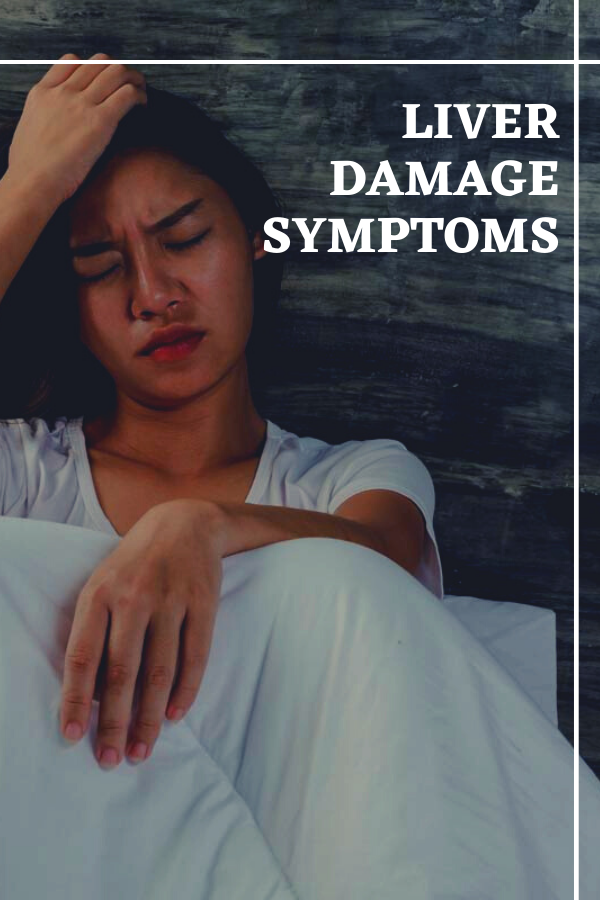 Your liver is the largest organ in the body, and it pays a pivotal role in eliminating poisons from the blood and turning food into energy. But do you know that cases of liver damage are on the rise?
Your liver is the largest organ in the body, and it pays a pivotal role in eliminating poisons from the blood and turning food into energy. But do you know that cases of liver damage are on the rise?
A liver damage is the collection of disorders, infections and conditions that affect the structures, tissues and cells of the liver, causing liver diseases or failure. The CDC (Center for Disease Control) reports that the total number of deaths from end-stage of liver damage in the US is currently between 30,000 -40,000 annually.
Following are the conditions that cause liver damage
- Jaundice
- Acetaminophen toxicity
- Fibrosis
- Cancer
- Cysts
- Alcoholic liver disease
- Hepatitis
- Fatty liver disease (NAFLD)
- Primary sclerosing cholangitis
Causes and Symptoms of Liver Damage
Acetaminophen Toxicity
THE JAMA (Journal of Medical Association) reports that when a person takes the maximum approved daily dosage of acetaminophen (a chemical present in a gamut of common medicines including Sinus/ Headache/ Tavist Allergy caplets, Tylenol and Vicks DayQuil Multi-symptom cold/flu relief – tests subject to early warning signs of liver damage.
Symptoms Liver Damage due to Acetaminophen Toxicity
- Yellowing of your skin and whites of the eyes
- Unexplained flu-like symptoms
- Dark urine
- Itchy skin
- Upper right-sided abdominal tenderness
Hepatitis
A gastroenterological disorder, hepatitis means swelling or inflammation of liver. Hepatitis is not just one, but a number of diseases – Hepatitis A – E, wherein the liver becomes inflamed and its cells get damaged as a consequence of inflammatory chemicals being released in the liver. Chronic hepatitis B infection grows the chances of a person developing liver cancer by 100-times.
Symptoms of Liver Damage due to Hepatitis
- Joint aches
- Mild fever
- Malaise
- Dark urine
- Abdominal pain
- Vomiting 2-3 times in day, during the 1st five hours
- Loss of appetite
- Diarrhea
- Fatigue
- General achiness
The red flags of various kinds of hepatitis are same, the most noticeable being Jaundice. As the viral infection spreads through the liver, the gland becomes enlarged, often triggering abdominal pain.
Alcoholic Liver Disease
In the US, cirrhosis was one of the leading causes of death in 2000. Alcoholic liver damage typically develops after years of excessive alcohol intake. The longer the period during which alcohol is highly consumed and the higher is the amount ingested, the greater are the chances of developing alcoholic liver disease.
Symptoms of Liver Damage due to Alcoholic Liver Disease
Symptoms of liver damage due to alcoholic liver disease becomes worse after an episode of heavy drinking and tends to differ with the severity and progression of the ailment. Some symptoms do not show themselves till the ailment is relatively at an advanced stage.
- Weight gain due to ascites
- Confusion
- Fever
- Excessive thirst/ dry mouth
- Abdominal pain & tenderness
- Nausea
- Fatigue
Additional symptoms include:
- Abnormally light or dark skin
- Hallucinations
- Breast development of males
- Agitation
- Difficulty concentrating
- Paleness
- Redness on hands or feet
- Vomiting sludge-like material or blood
- Fluctuating moods
- Black, dark, tar-like or bloody bowel movements
- Fainting or light-headedness
- Impaired judgment
Liver Fibrosis
It is usually considered as the third stage of Alcoholic Liver Disease, a progressive liver damaging disorder.
Fibrosis is characterized by the development of fibrous tissues, liver scarring and regenerative nodules, all of which hinder blood circulation and lead to gradual loss of liver function. Commonly caused by hepatitis C and alcoholism, fibrosis is a degenerative disorder of the liver.
Symptoms of Liver Damage due to Liver Fibrosis
- Nausea
- Fatigue
- Tiny, spider-like blood vessels beneath the skin
- Easy bruising
- Liver enlargement or tenderness
- Bleeding from engorged veins in the intestines or esophagus
- Weight loss
- Weakness
- Swelling of legs or feet because of retained fluid
- Dark urine
- Yellowing of eyes and skin
Liver Cirrhosis
It is generally considered as the fourth stage of Alcoholic liver disease; a progressive condition leading to liver damage.
The most common cause of cirrhosis, chronic alcoholism subjects for around 40% of 26,000 people who die from the disease. The condition is characterized by replacement of healthy liver tissues with fibrous tissues, liver scarring and regenerative nodules. The consequential hardening of the liver hinders blood circulation, eventually leading to irreversible liver damage and failure
Symptoms of liver damage due to Liver Cirrhosis
During the initial stages, people with cirrhosis experience so symptoms of liver damage. However, as the fibrous tissue replaces healthy ones and liver function starts to fail, a person may feel myriad symptoms:
- Fatigue
- Insulin resistance and Diabetes Type-2
- Easy bruising
- Abdominal pain
- Gallstones
- Dark colored urine
- Weight loss
- Varix – an abnormally swollen or dilated artery, lymph vessel or vein
- Nausea
- Tiny, spider-like blood vessels beneath the skin
- Liver cancer
- Lack of appetite
- Exhaustion
- Abnormal accumulation of fluid in the abdominal cavity
- Loss of interest in sex
- Yellowing of eyes and skin (jaundice)
- Itchy feet and hands
- Swelling of feet and legs
- Bleeding from engorged veins in your intestines or esophagus
- Sensitivity to medications
- Hepatic encephalopathy – toxin in brain or blood (signs are – confusion, change in sleeping habits, mood changes, forgetfulness, trouble concentrating and in advanced cases – coma or delirium)
Jaundice
It is not a liver disorder, but rather a symptom that can develop as a result of myriad diseases. It appears as yellowish discoloration of whites of eyes and skin caused by abnormal build-up of bilirubin in blood. High levels of bilirubin may be attributed to abnormalities or inflammation of liver cells. Jaundice is often the first and sometimes the only symptom of liver damage.
Fatty Liver Disease (Non-Alcoholic Fatty Liver Disease or NAFLD)
This condition is considered to be the first stage of Alcoholic liver disease.
The exact cause of NAFLD is still unknown. Many researchers believe that metabolic syndrome ( a group of disorders that augment the risk of heart disease, stroke and diabetes plays a key role in the development of NAFLD.
Non-Alcoholic Fatty Liver Disease Levels of Severity
- NASH (Non-alcoholic steatohepatitis) – Inflammation and symptoms of necrosis start to appear. Scar tissue develops eventually as liver cell injury happens.
- Simple fatty liver (steatosis) – No symptoms
- Cirrhosis – Liver scarring results in a hardened liver, which is unable to function adequately. This condition can be fatal.
Symptoms of Liver Damage due to Fatty Liver Disease
- Fatigue
- Lack of appetite
- Weight loss
- Weakness
Confusion, trouble concentrating or forgetfulness - Weakness
- Fluid in the abdominal cavity
- Yellowing of eyes and skin
- Bleeding from engorged veins in your intestines and esophagus
- Tiny, red spider veins beneath the skin
Screening and Diagnosis of Liver Damage Symptoms
- Blood tests to ascertain electrolyte and bilirubin damage
- MRI scans
- Stool tests
- ERCP
- Computerized tomography
- Abdominal Ultrasound
Natural Treatments to Treat Symptoms of Liver Damage
Milk Thistle
The herb milk thistle has shown promising effects to treat various symptoms leading to liver damage. Some evidences report benefit for cirrhosis, alcoholic hepatitis, liver toxicity and viral hepatitis caused by industrial chemicals, medications and mushroom poison.
S-adenosylmethionine or SAMe
The human body manufactures S-adenosylmethionine for utilization in converting certain complex chemicals into simple chemicals. Some evidences state that SAMe consumed as an oral supplement may have great worth in the treatment of various symptoms of liver damage, including liver cirrhosis, liver toxicity, jaundice and viral hepatitis.
Self-help Treatments to Cure Symptoms of Liver Damage
- Avoid Alcohol
- Rest
- Avoid unnecessary medications
- Drink 8-10 glasses of water a day
- Eat well-balanced diet
Enjoyed Liver Damage Symptoms? Share it with your friends so they too can follow the Superfoodsliving journey.
Share on Pinterest
